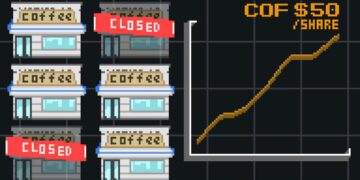Stock trading 101 basics
You’ve likely heard about the recent drama involving GameStop, but unless you’re familiar with how the stock market works, the intricacies of what’s going on may have been lost on you.
And if that’s the case, we don’t blame you—the world of investing can feel like an intimidating place, especially if you’re relatively new to the scene. So for those looking to learn the basics of stock trading, this video by TED-Ed is a good place to start.
We touch on some key takeaways from the video below, like why stock prices fluctuate, how investors choose which stocks to purchase, and differences between active and passive investing.
Picking a stock 101 basics
Despite the risk involved (or perhaps because of it) many investors choose to actively manage their stocks. To assess a company’s potential value, and ultimately find undervalued stocks, an active investor may:
- Investigate a company’s business operations
- Review its financial statements
- Track price trends, with the goal of finding a company that’s undervalued
An active investor may also choose to put money in one or more actively-managed funds, or simply hire a financial planner to do the work on their behalf.
The active investors vs passive
So how do investors choose which stocks to purchase? Well, there are two main styles of investing—active and passive:
- Active investors try to beat the market by purchasing shares they believe are undervalued, with the intent to sell once the price goes up
- Passive investors track the market and tend to hold onto their stocks with the belief that over time, their value will increase
In the U.S., there’s a fairly even number of passive versus active investors—in 2019, about 45% of assets in U.S. stock funds were managed passively.
And while active investors have the potential to make a lot more money, passive investments have generally shown higher returns in the last decade.
Why stock prices fluctuate
If you’re still reading this, we’re going to assume you’re fairly unfamiliar with the world of stocks. So let’s start with the basics—what even is a stock?
A stock is a partial share of ownership in a company. Units of stock are called “shares,” and these are mostly traded on stock exchanges, like the New York Stock Exchange (NYSE) or Nasdaq.
The price of a stock is determined by supply and demand, or the number of buyers versus sellers. When there are more buyers than sellers, the price increases. On the flipside, if there are more sellers than buyers, the price goes down.
Essentially, a company’s stock price is a reflection of how much investors think a company (or a portion of a company) is worth. That’s why a company doesn’t actually need to make profit to be valued by the market—investors simply need to have faith that it’ll become profitable eventually.
Because of the speculative nature of stocks, prices can fluctuate quickly and drastically, depending on public perceptions.
The latest trend and news for the people by the people. Left right and center all in one place.











































